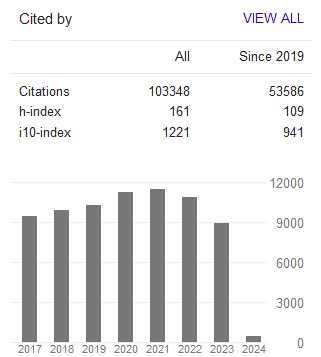Ways to Take Advantage of Knowledge Management in Jordanian Educational Institutions
- Mahmoud Alnawaiseh
- Burhan Al-Omari
- Adnan Al-Rawashdeh
Abstract
This study aims To shed light on the concept of knowledge management and its dimensions, Understand theimportance of knowledge management and justifications for taking out the institutions of higher education, Toidentify the input and knowledge management processes required for successful institutions of higher education,To identify the products and the effects of knowledge management institutions of higher education, Detection ofthe most important methods of benefit associated with the management of institutions of higher educationknowledge.
The study used a descriptive approach to the appropriateness of the nature and objectives of the study; helps inthe detection of the concept of knowledge management and its dimensions , processes and outputs of educationalinstitutions, and that this approach does not stop at the present , but extends into the future, so do not stop at theborders describe phenomena and problems, but extends to the analysis and interpretation, and out of theconclusions meaningful benefit in the treatment of the issue under study. Conclusions private institutions ofArabic higher education: The analytical study revealed that higher education institutions in general, Arab, and inJordan, and in particular suffer from, The absence of the concept of knowledge management and practicesaddressing the issues of knowledge in a piecemeal fashion, double the investment of modern technologies in thefield of conservation and dissemination of information ,lack of consensus skills and knowledge graduates withthe requirements of the knowledge society, the weakness of the relationship between scientific research andknowledge management, with respect to the generation and dissemination of knowledge, need for highereducation institutions to engage the Arab public in the era of knowledge and practices of knowledgemanagement, through a good investment for intellectual capital available to them.
- Full Text:
 PDF
PDF
- DOI:10.5539/ijbm.v9n7p162
Journal Metrics
Google-based Impact Factor (2023): 0.86
h-index(2023): 152
i10-index(2023): 1168

Index
- Academic Journals Database
- AIDEA list (Italian Academy of Business Administration)
- ANVUR (Italian National Agency for the Evaluation of Universities and Research Institutes)
- Berkeley Library
- CNKI Scholar
- COPAC
- EBSCOhost
- Electronic Journals Library
- Elektronische Zeitschriftenbibliothek (EZB)
- EuroPub Database
- Excellence in Research for Australia (ERA)
- Genamics JournalSeek
- GETIT@YALE (Yale University Library)
- IBZ Online
- JournalTOCs
- Library and Archives Canada
- LOCKSS
- MIAR
- National Library of Australia
- Norwegian Centre for Research Data (NSD)
- PKP Open Archives Harvester
- Publons
- Qualis/CAPES
- RePEc
- ROAD
- Scilit
- SHERPA/RoMEO
- Standard Periodical Directory
- Universe Digital Library
- UoS Library
- WorldCat
- ZBW-German National Library of Economics
Contact
- Stephen LeeEditorial Assistant
- ijbm@ccsenet.org
